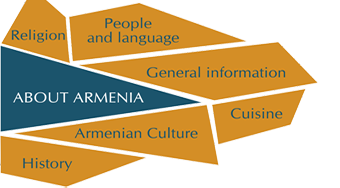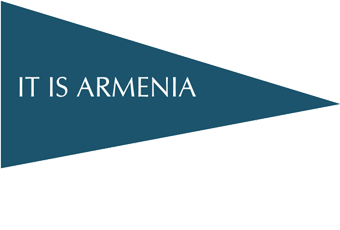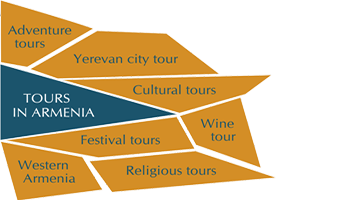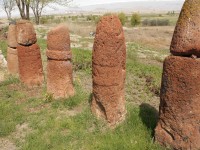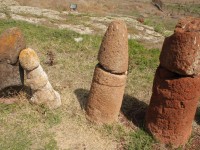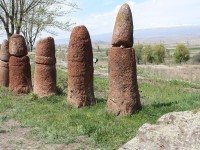Metsamor
The ancient settlement of Metsamor is located 35 km to the south-west of Yerevan, in the Marz (region) of Armavir, near the village of Taronik. It is a monument to the Early Bronze age. As far long as in the 4th century BC Metsamor was a flourishing settlement, with the expansive area of approximately 100 hectares. The etymology of the name, the Great Mother, confirms that there was one of the main centers of worship of the goddess Anahit. In total, there were seven holy places in Metsamor. In the temple of Metsamor there were performed ceremonies of consecration, sacrifices to the gods were given, wine was breeded, sacred bread was baked... It was a well-fortified and fenced fortress city, which had a temple and an observatory... Many researchers believe that the Metsamor was the capital city of the Araratyan region during the preurartian period. Of particular interest are dozens of phalluses dedicated to the Mother Goddess, which are a symbol of fertility. At the grave field, which is located 0.5 km to the north-east of the citadel mausoleums of enormous size were excavated, which were circled by cromlechs of red tuff. The tribal leaders were buried here, and in honor to them many sacrifices of horses, cattle and small cattle, dogs and many other animals were made and also buried with them. Among the buried objects found in the mausoleums glazed clay vessels, carved wooden caskets, luxury items made of gold, silver and semi-precious stones and paste stand out. Metsamor is the world's oldest copper-molybdenum factory known to us. The whole system of the copper-molybdenum factory has been well preserved till now: the furnaces and the foundry, which were carved in the rock. As far long as thousands of years ago, there were 14 species of copper. Copper was supplied to Metsamor from afar - Lori. Thousands of rare specimens have been preserved in the museum in the territory of the ancient settlement of Metsamor. The number of preserved exhibits is nearly 25 thousand. Among the detected things the most important are the frog kettlebell (16th century BC) made of agate, which belonged to the king of Babylon Ulam Burariash and the stamp of sardonyx with the text of Egyptian hieroglyphs (15th century BC ) belonging to another ruler of Babylon Kurigalzu. These found items testify that Metsamor was at the crossroads of the trade roads since ancient times, which passed through valley of Ararat and connected the Western Asia to the North Caucasus.





